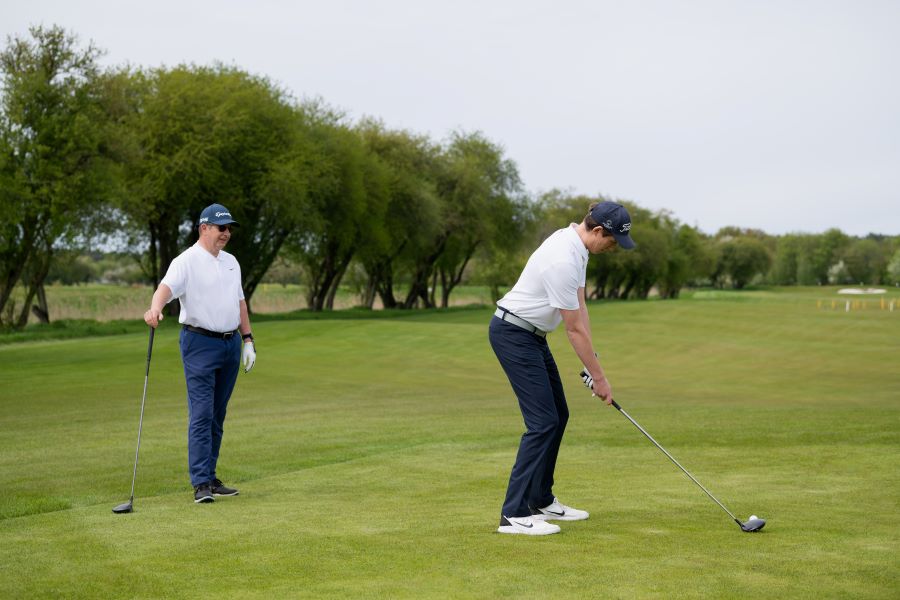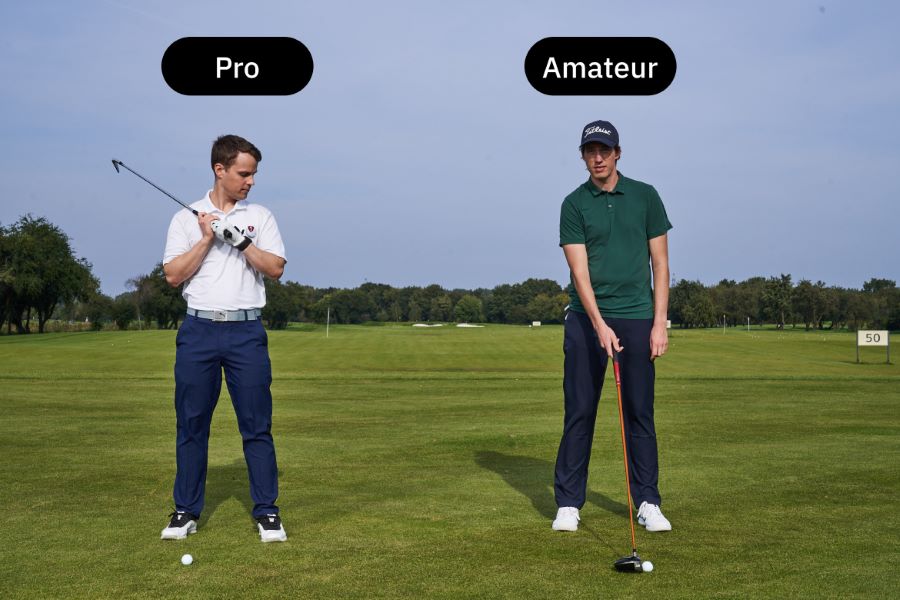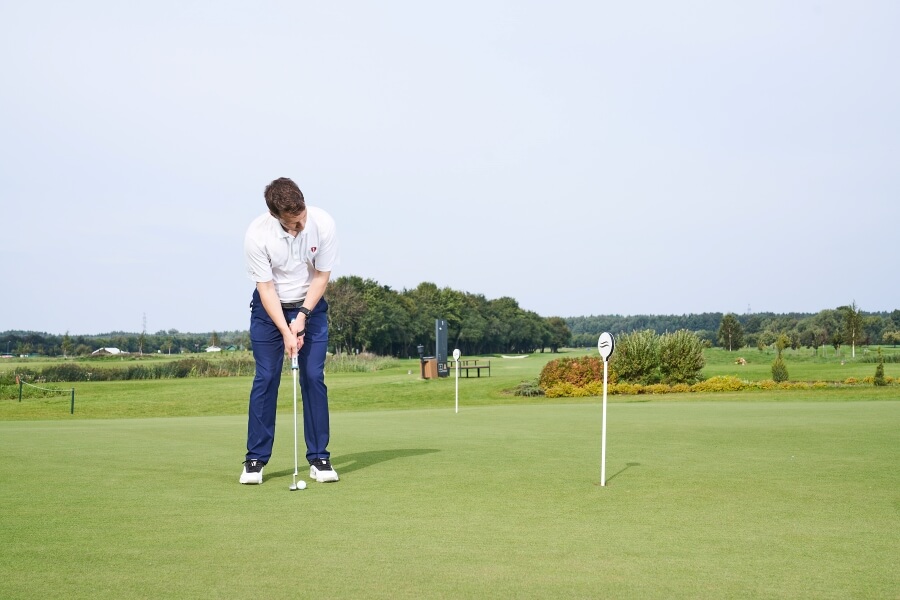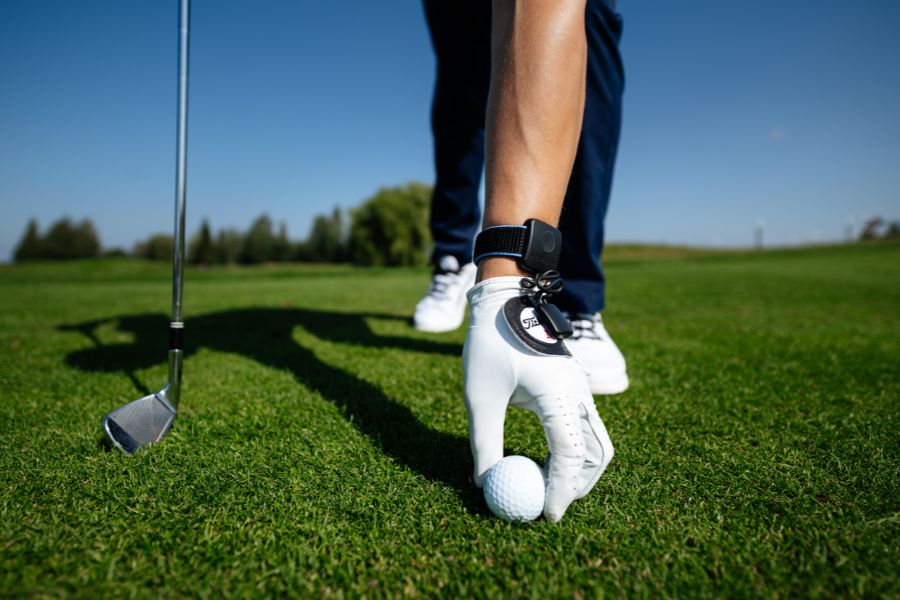Golf Etiquette: 25 Rules & Tips for Beginners (And Even Seasoned Golfers)
One of the things that makes golf so unique has got to be the rules, etiquette, and traditions of the game.
Many of those rules and regulations are written and very detailed. Some, especially in terms of the etiquette component, are unwritten.
Today I will share a few of the written and many of the unwritten rules to consider as you play the game.
Please note that I will not cover the game’s rules other than Rule 1. Check out the USGA’s Rules Hub for the complete rules of golf.
Contents
- Clearly Defined Etiquette Rules and Recommendations by the USGA
- 25 Etiquette Rules & Tips for Beginners (And Even Seasoned Golfers)
- Divots 101
- Pitch Marks 101
- Rake the Bunker
- Know Where You Drive Your Carts
- Pick Up Tees on the Teeing Area
- Do Not Take Your Ball Out of the Hole with a Club
- Know When to Yell “Fore!”
- Play “Ready Golf”
- First Person to Hole Out Replaces Flag
- Watch Where Yours and Your Partners Ball Goes
- Stick to a 3 Minute Ball Search (It’s a Rule too)
- Help Playing Partners Look for Lost Ball
- Hit a Provisional Ball if You aren’t Sure if Ball is Lost
- Don’t Talk to Playing Partner’s Ball
- If You Say, “Nice Shot” Make Sure it’s a Nice Shot
- Be 30 Minutes Early for Your Tee Time (At Least!)
- Be Prepared to Play
- “Quiet Please!” Don’t Talk When Someone is Playing a Shot
- Don’t Walk in Playing Partners Putting Line
- Ditch The Phone When Possible
- Pace of Play
- Don’t Have a Meltdown…It Makes You Look Foolish!
- Take Off Your Hat, and Shake Hands
- Etiquette Towards Course Maintenance Personnel
- Practice Area Etiquette
- In Summary
Clearly Defined Etiquette Rules and Recommendations by the USGA
Some of the matters of etiquette in golf are clearly defined and are written rules within the game. These rules revolve mostly around USGA Rule 1. The following is direct from the USGA regarding this critical starting point within the game.
Rule 1 – The Game, Player Conduct, and the Rules
The overarching purpose of Rule 1 in the USGA Rules of Golf is to lay the essential groundwork for the game of golf. These principles include:
- Playing the golf course as you find it.
- Playing the ball as you find it (in most cases).
- There are no referees in golf. You are charged with being honest about how you play the game and will ultimately be your own rules official.
Rule 1.1 The Game of Golf
In Rule 1.1, the very basics of how to play the game are explained. You start at the teeing area and hit the ball with your clubs until it is holed out, in the hole, on the putting green.
As most know, the game is much more complex than that, which is why the rules of golf exist. The rules are lengthy and detailed, covering everything that could happen within the course or a round.
The basic principle of the game remains, however. Play the course as you find it, for the most part, play the ball as it lies, and be your own rules official.
1.2 Standards of Player Conduct
Rule 1.2 talks about the game’s spirit and its roots in etiquette. Golfers must act with integrity, show consideration for others, and care for the golf course.
The idea of acting with integrity means that golfers need to do what’s right while playing, not for themselves necessarily, but in the overall spirit of the game.
They need to call penalties on themselves when a breach of the rules happens…and even if no one sees the infraction.
Showing consideration for others includes your playing partners, other players on the course, the golf course operations staff, and the golf maintenance staff.
This includes things such as:
- Keeping a good pace of play
- Fixing divots
- Fixing ball marks
- Yelling “Fore” when necessary
- Not being a distraction to playing partners
There is not necessarily a rule per se that covers poor conduct; however, in competition, the Committee can adopt a Code of Conduct. In that case, you could get a penalty if you do not follow that specific Code of Conduct.
1.3 Playing by the Rules
Rule 1.3 covers playing by the rules entirely as you play. Golfers must recognize when they have broken a rule and address the infraction.
The rules can be complicated, so studying them is advisable. The Rules of Golf is a small-sized yet jam-packed book that all golfers should have in their bags.
In competition, golfers may ask for rules help from a referee or the Committee. If help is not readily available, you must play on and keep a good pace.
Use your best judgment, and even play two balls if needed. You can always do that and bring up the issue later at the scoring table.
25 Etiquette Rules & Tips for Beginners (And Even Seasoned Golfers)
Now that the essence of the game, through Rule 1 of the USGA and R&A’s Rules of Golf, has been touched on, let me give you some of the most significant unwritten rules you should know.
Divots 101
There are several things to know regarding divots. Let’s start with the definition of a divot.
Divot – a piece of turf cut out of the ground by a golf club while making a stroke.
What you need to know regarding divots:
1. Do your best not to take divots on practice swings. If you do, replace them per the best practice recommendations for the area of the country you are playing in (yes, there are different ways to do this!).
2. As mentioned above, there is no one way to replace a divot. Depending on where the course is that you are playing, golf course superintendents have preferred ways to fill or replace a divot. This is because the grasses on different courses have unique growing characteristics, particularly with their root structure.
The basics you should know is this…a divot that still has most of the roots intact and soil still in place on its underside should be replaced.
To do this, replace the divot and press down firmly and fully with your foot. Faster-growing grasses, such as bentgrass, Bermuda, or seashore paspalum, are varieties that should generally be replaced. But again, this depends on the health of the divot itself.
A divot with little to no roots or that has completely disintegrated will require you to replace it with the sand/seed mixture on your cart.
Fill the divot completely with this mix and smooth it out with your foot. Slower-growing grass varieties, such as fescues, are candidates for filling.
Seed and sand mix will generally germinate once the soil temperatures are 50 degrees and above. In the northern parts of the U.S., soil temperatures are generally below 50 degrees from mid-November through the end of April.
3. Get into the habit of fixing your divot and one other. This will help the course heal much faster and give you much better conditions to play on.
Pitch Marks 101
There are several things to know regarding pitch marks on greens. Let’s start with the definition of a pitch mark.
Pitch Mark – an indentation caused by a golf ball hitting the turf in golf, specifically on a green.
What you need to know regarding pitch marks:
- Getting to know your pitch marks will help you to identify them and fix them correctly. In a fascinating article by the late Stan Zontek, former Director of the USGA’s Mid-Atlantic Green Section Region, he breaks down the pitch mark. Stan classified the pitch mark into four categories.
- Type I- The Bruise. Least severe pitch mark. They are hard to see sometimes, but they could prove harmful to the turf.
- Type II – The Dent. These are the most common type of pitch marks. Type II ball marks are very apparent and easy to locate on the green. If these marks are left unrepaired, it can take up to two weeks to heal.
- Type III – The Pit. These pitch marks create profound impacts that, like Type II, are easy to see. These are a little more severe than Type II; if they are not repaired, they take even longer to heal.
- Type IV – The Skid Mark. These are the most damaging type of ball marks. With this type of mark, they will leave a deep pit and take a chunk of the turf and tear it away from the putting surface. These are the most prominent and destructive types of ball marks. Oversaturated greens are often the main reason this type of mark is left on the green.
- Knowing how to fix a pitch mark properly is critical to healing them correctly and quickly. To learn how to repair a pitch mark correctly, please watch the video below from the USGA.
- As with divots, it is advisable to not only worry about your own pitch mark but get into the habit of fixing and a few others as you play.
Rake the Bunker
Raking the bunker after you play from is an essential rule of etiquette in golf.
Not only is it helpful to the golfers that may have to play out of the bunker in groups behind you, but it is also helpful to the maintenance staff.
Additionally, make it a habit to enter and leave the bunker from the low side. Do not get in and out of bunkers from steep faces.
If you fail to care for the bunkers, don’t complain when you find yourself in someone else’s footprint later in your round!
Know Where You Drive Your Carts
Be aware of where you drive your cart. Most golf courses are well-marked with signage, ropes, and other directional markers. These are there for a reason. Use some common sense even if a course does not have these reminders in certain areas.
Do not drive carts too close to the teeing areas and especially the greens. Most of the time, these areas will have cart paths a preferred distance from the tee or green…so keep your cart on the path!
Be aware of conditions that may be too wet or too dangerous to take your cart on.
Pick Up Tees on the Teeing Area
Many courses will have a small broken tee collection box on each teeing area, especially on the par threes. Make sure you pick up your tees, broken or intact.
Too many broken tees could damage the blades on the tee mowers or require the maintenance worker to get off his mower constantly.
Do Not Take Your Ball Out of the Hole with a Club
Some golfers have the bad habit of taking their golf ball out of the hole with their putter, wedge, or other iron. Don’t do this. It could damage the hole’s edges or even the cup itself.
If you are someone that disregards this and thinks it isn’t a big deal, think again. And remember, if this is you, don’t get upset if you fall victim to someone else doing it, and damage to the cup’s edge knocks out your next birdie putt.
For this tip and more putting green-related etiquette, see the video below.
Know When to Yell “Fore!”
“Fore!” is used to warn anyone standing or moving within the area where a golf ball might finish.
Don’t be shy if you need to yell this, as the purpose is to warn someone of potential harm that may come their way through your errant shot.
I promise you, if a ball is fired your way accidentally, you will appreciate the “Fore!” that comes your way.
Play “Ready Golf”
Slow play is and will always be an issue in golf. The best we can all do is do our part to make sure we play at a good pace. If we all can do that, then the overall pace of play may improve.
In the video below, Mark Crossfield talks about ready golf and how you could use this idea in your golf game to help with the pace of play.
First Person to Hole Out Replaces Flag
In the interest of pace of play, you should be aware of other areas to help speed things up. One of those areas is the simple act of replacing the flag stick promptly after your group finishes the hole.
In general terms, the first person to hole out should be the one to get the flag and replace it.
Watch Where Yours and Your Partners Ball Goes
Instead of getting upset about a bad swing and slamming your club on the ground in disgust, learn to suck it up and watch where your golf ball ends up. Additionally, keep an eye on your playing partner’s ball as well.
Slow play is a problem, and the start of that problem, in many cases, is not knowing where your ball ends up. When this happens, you spend needless time looking in areas for your ball where it may not even be.
Stick to a 3 Minute Ball Search (It’s a Rule too)
In 2019, the USGA changed Rule 18.2, which covers the time allowed to search for a lost ball. The search time was reduced from 5 minutes to 3 minutes. The USGA cites the reasons for the change as:
Limiting the search period to 3 minutes is more consistent with the underlying principle that golf is to be played in a prompt and continuous way, without long pauses in play.
In most cases, if the ball is going to be found, it will be found within the first 3 minutes.
Although this change may increase the number of lost balls, on average the overall impact should be to speed up play.
Knowing that the search time is limited to 3 minutes should encourage players to play a provisional ball when they believe there is a chance their ball may not be found.
Help Playing Partners Look for Lost Ball
Sticking to the theme of slow play and lost golf balls, I recommend helping your playing partners look for a lost ball.
This will help speed up the process and keep them from potentially having to take a penalty. It serves you well from a pace of play standpoint, and in the scratch my back, I’ll scratch your scenario. The bottom line, help those whom you may eventually need help from.
Hit a Provisional Ball if You aren’t Sure if Ball is Lost
What is a provisional ball in golf? Per the USGA, a provisional ball is “Another ball played in case the ball just played by you may be out of bounds or lost outside a penalty area.”
Playing a provisional ball is another time saver and a way of speeding up play. The video below from the USGA explains the use of a provisional ball.
Don’t Talk to Playing Partner’s Ball
Some of my upcoming suggestions, such as the following, are from more of a lighthearted perspective. At the same time, they will serve you well as you play.
Many of these types of suggestions touch on things that are annoying to some, so do your best to feel out your playing partners, especially if you don’t know them, to see how they might take specific comments.
The first example of one of these more lighthearted tips is not talking to a playing partner’s golf ball in flight. People are funny sometimes, and some are just downright weird in certain situations on the golf course.
This is an example of one of those situations. You may mean well with your comment of “Sit Ball…Sit!” or “Bite!” but sometimes people take things you say differently than you may have intended. As I said, golfers are weird sometimes!
Don’t be an annoying golfer…or fall into one of these stereotypes that Dude Perfect mentions below…
If You Say, “Nice Shot” Make Sure it’s a Nice Shot
Golf is hard, even for the best players. So when paired with a good player, don’t get into the habit of always saying “Nice Shot” after every shot they hit.
You know that guy I’m talking about…you have probably played with them a time or two. They may mean well, but eventually, they find a way of getting under your skin. Don’t be that guy!
What constitutes a good shot for you may not be what that plus two handicap you got paired with had in mind. Make sure you pick and choose your “Nice Shot” mentions.
To prove even great players can hit some nasty shots, check out this video:
Be 30 Minutes Early for Your Tee Time (At Least!)
Another tip in the “Don’t be that guy” file is a lack of punctuality. Make sure you are at least 30 minutes early for your tee time.
There are always those golfers that show up right on time or even late for their tee times, and I have to say, that isn’t very pleasant for those of us that work in the business, especially when it’s a full tee sheet kind of day.
It is much easier on you, too, as the golfer when you arrive early enough to warm up, grab all of those last-minute essentials, and perhaps use the restroom.
One of the most famous instances of running late for a tee time was Rory McIlroy at the 2012 Ryder Cup. You can relive that moment below.
Be Prepared to Play
Along those same lines, and similar to what I mentioned in Tip #16, you want to be prepared and ready to go when it’s your tee time.
Make a checklist of everything you will need to have before your round. Some items may include:
- Ample golf balls
- Ample golf tees
- A glove or two
- Divot repair tool
- Towel
- Range finder
- Score Card
- Pencil or two
- Hat
- Sunscreen
- Bug spray
- Snacks
- Drinks
- Other essential items
“Quiet Please!” Don’t Talk When Someone is Playing a Shot
One of the most well-known unspoken rules of etiquette in golf is to be quiet when someone is getting ready to hit a shot.
This is almost a no-brainer…or you would think it was, at least. I have played countless rounds with a playing partner who either did not know how loud they were or didn’t care. This is another one for the “Don’t Be That Guy” file.
Be respectful of your playing partners, and you will likely get the same courtesy in return.
But…if you are with your buddies, let trash talk commence! Much like Aaron Rodgers, Tom Brady, Patrick Mahomes, and Josh Allen did at last year’s The Match.
Don’t Walk in Playing Partners Putting Line
Another common rule of golf etiquette is being aware of a playing partner’s putting line and avoiding walking in it.
For those unaware of what a player’s line of putt is on the green, it is an imaginary line that the ball will travel on as it makes its way to the hole. This line extends to the other side of the hole as well.
Walking on their line could potentially mark up their ball’s pathway to the hole. In reality, however, this is just one of those unsportsmanlike rules that have been part of golf for a long time.
Ditch The Phone When Possible
I am as much of an addict to my cell phone as the next person, but one place where I generally try to avoid being on my phone constantly is the golf course.
Unless I am recording a swing for a student, I generally try to only check messages between lessons, at the turn when playing, or when I have hit a backup on the course.
Some golf courses discourage cell phone use as it can become a pace of play problem for some. In the big scheme of things, the golf course is meant to be a place to get away from the daily grind. So put that phone away and enjoy your round.
The Masters Tournament famously restricts phones on the property for its patrons. I have been to 11 Masters, and I will tell you this…for as much as I love my phone, I don’t miss it one bit that week in Augusta.
Pace of Play
As mentioned a few times, the pace of play is a big problem in the game. I have already shared a few tips on things you can do to speed up play, but I wanted to touch on some of the main ones next.
- Keep Up with Group in Front when Possible – this is the best indicator of your pace, especially on busy days. However, this is not always a foolproof way of gauging the overall pace. If you are in a twosome, with a few foursomes ahead of you, those groups may be keeping a good pace, but you will likely be waiting. However, this is a good rule of thumb for the most part.
- Let Faster Groups Play Through – if you are slow and aware of this fact, let faster groups play through. Be careful of using this etiquette as a reason to continue playing slowly. Do your best to keep a good pace. No matter what, a golfer’s playing ability level is never an excuse for extremely slow play.
Don’t Have a Meltdown…It Makes You Look Foolish!
I said this previously, but golf is challenging. That is a commonly known fact. Regardless, you need to keep your cool on the golf course. Nobody wants to play with someone, always throwing a tantrum during a round.
The frustration that the game can bring is understandable, but having outbursts makes you look like a fool and does zero good for your game. In fact, it does quite the opposite.
Even PGA TOUR elite players can lose their cool, and as much as we admire them in general, they, too, look stupid when they lose it.
Take Off Your Hat, and Shake Hands
Golf has always been known as a very respectful game. Part of that is sharing your day with others. Whether they are friends or players you were paired with for the first time, you want to do your best to ensure the day is pleasant for all.
Part of that is the tradition of taking off hats and shaking hands on the final green. This is one of the coolest aspects of the game.
Etiquette Towards Course Maintenance Personnel
Having good etiquette towards course maintenance staff is helpful for them and you. However, golfers often need to learn the protocol on how to play while course maintenance workers are present.
Most maintenance staff are trained to work and be aware of oncoming play on busy days.
The video below from the USGA will help shed light on this sometimes-confusing point of golf etiquette.
Practice Area Etiquette
Even the practice areas at your local golf course have matters of etiquette you should know. The following are a few of those things to learn and remember the next time you are having a practice session.
- Know How to Make a Divot Line on the Range – with the number of golfers that hit the range daily, it’s a given that the turf takes a beating. Knowing the proper way to hit balls by creating proper divot lines is the superintendent’s preferred way to have golfers beat balls. Doing this, followed by filling in those divot lines with a sand-seed mixture, will help the turf grow back faster.
- Return Your Range Basket – it doesn’t take long for range baskets to litter the entire driving range teeing ground. Please do your part in helping the staff as they try to keep things looking good. Return those range baskets when done.
- Obey Short Game Practice Area Signs – many courses have different practice greens for putting and practicing other short game shots such as chips, pitches, and bunker shots. These greens are often marked with signage. Pay attention to that signage and practice your putting, chipping, pitching, and bunker play in the specific areas as noted.
In Summary
There are numerous aspects of golf that players need to learn and try to improve upon in order to play well.
Some areas that golfers should know, for their sake and the overall betterment of the game, are often not taught.
My hope with this article was to share some of those unwritten rules of etiquette with you and help you be better informed.















